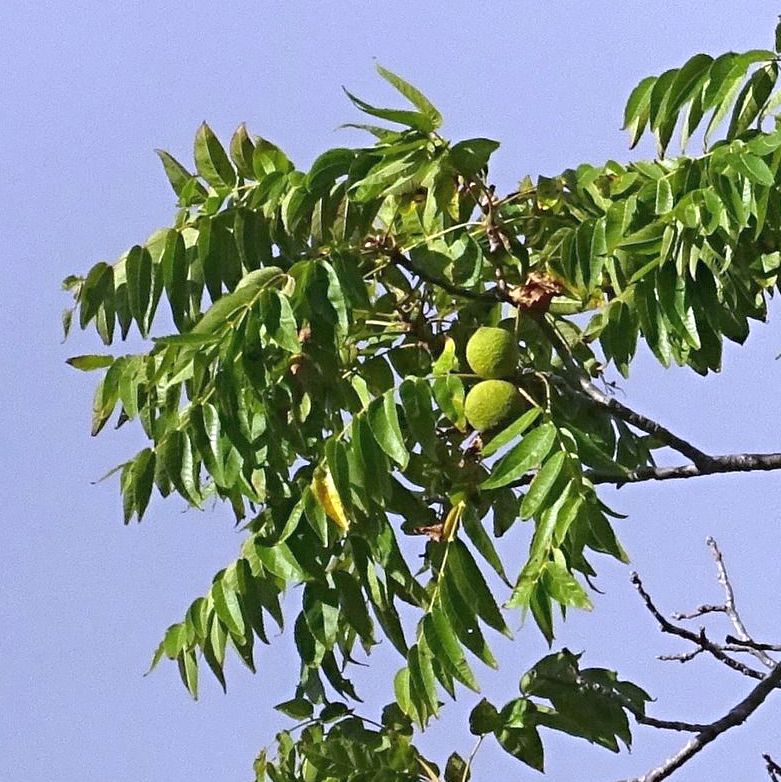
Others think of the earthy brown dye that can be produced from the hulls, or the elixir they yield that kills parasitic worms and bacteria. Finally, there are others who see the half-empty glass. They are concerned by the knowledge that some plants don’t thrive in the presence of black walnut.
Juglans Nigra
The Latin name for the black walnut is Juglans nigra. Juglans, derives from Jovis, and glans means nut. So, Jovis + glans, is “nut of Jupiter”. Nigra means “black”, so Juglans nigra translates to “black nut of Jupiter”.
Juglone
Juglone is produced in the roots of the tree, but more particularly by its canopy. The growth of neighboring susceptible plants is stunted by juglone’s presence, the enzymes in their root systems being diminished. When the root-system fails to thrive, the plants do likewise.
Juglone is not particularly water-soluble. So if a black walnut tree is removed, its surrounding soil remains “contaminated” for a period.
Black Walnuts: The Shell Game
It is a task to remove the hulls, crack the shells, and gather the nut fragments of the black walnut. However, the nuts, intelligently used, are uniquely flavorful.
There is, additionally, another surprising use for the ground shells. They make a superlative, specialty sand-blasting agent. Please watch the following 5-minute video…
In Conclusion
We have demonstrated the black walnut is both a beast and a beauty. The tree discourages the growth of some plants, even for a time after it has been removed. But this “beastly” aspect is certainly minimal.
Juglans nigra is unquestionably attractive; the hardwood, with its rich deep-brown, markedly grained beauty in the hands of an artisan, results in exquisite furniture. The bark yields a desirable medicinal extract. The ripened hulls yield a natural, earthy dye. The shells produce a most useful specialty sand-blasting medium, or they can be used in craft projects.
Finally, the nuts are tasty. It ought to be mentioned that walnuts offer more protein per pound than other common food nuts. Truly the black walnut tree is much more a beauty than it is a beast.
Note: You might also enjoy The Devil’s Walking Stick – Aralia Spinosa
References:
- The New York Times: The Dark Side of the Black Walnut, by Dave Taft
- WVU Extension Service (archived 2015): Black Walnut Toxicity
- Center for Wood Anatomy Research: Juglans nigra